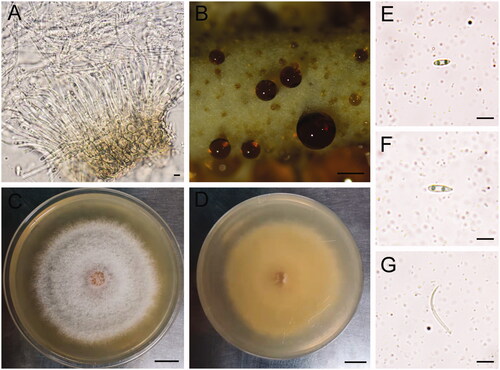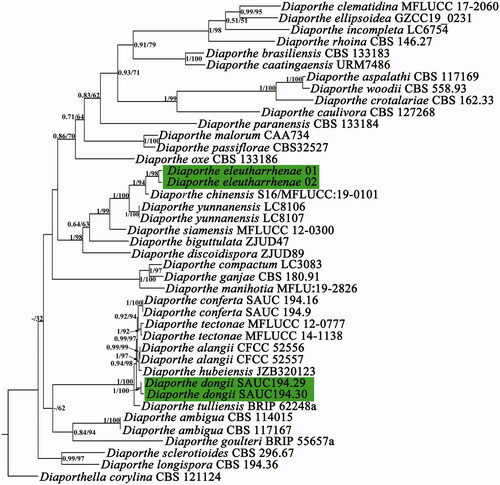Figures & data
Table 1. ITS, TEF1, and TUB2 sequences used for the identification of Diaporthe eleutharrhenae.
Figure 1. (A) Pycnidia of Diaporthe eleutharrhenae isolated from synthetic low-nutrient agar medium (SNA) on day 15. (B) Secretion of D. eleutharrhenae on the PDA Petri dish and on day 20. (C and D) Colony morphology of D. eleutharrhenae observed from the top and below the PDA Petri dish on day 7. (E and F) Alpha conidia. (G) beta conidia. Conidia were isolated from synthetic low-nutrient agar medium (SNA). Scale bars in A, E, F, G are 5 µL. Scale bar in B is 50 µL. Scale bars in C and D are 1 cm. Shorter alpha conidia (5–8.5 µm) and the presence of beta conidia are a key character for distinguishing D. eleutharrhenae from the most closely related species D. chinensis N. I. de Silva, Lumyong & K. D. Hyde.

Table 2. Synoptic characters of Diaporthe eleutharrhenae and its most closely related species.
Figure 2. Maximum likelihood tree based on two collections of Diaporthe eleutharrhenae and its closest related species using ITS, TEF1, and TUB2 sequences. “–” means no support. Maximum likelihood bootstrap value and Bayesian posterior probabilities are shown next to the branch node. Diaporthe dongii (H. Dong, J. W. Xia & X. G. Zhang) S. J. SONG & Landrein is the suggested new name of Diaporthe chinensis H. Dong, J. W. Xia & X. G. Zhang. Results strongly support Diaporthe chinensis N. I. de Silva, Lumyong & K. D. Hyde as the closest related species of Diaporthe eleutharrhenae.

